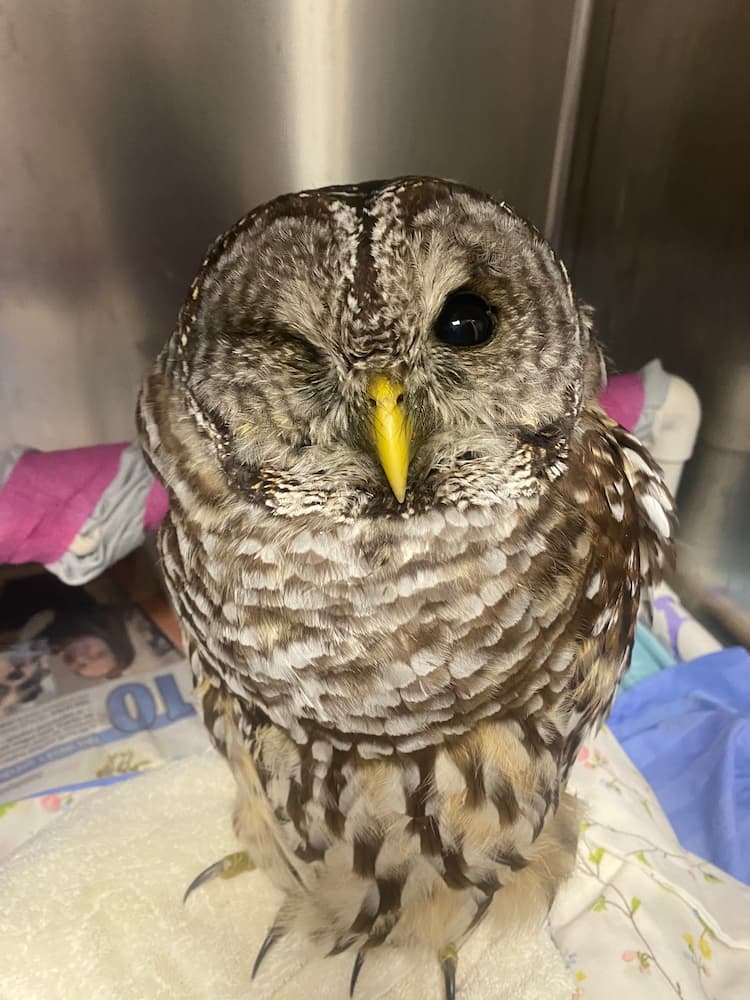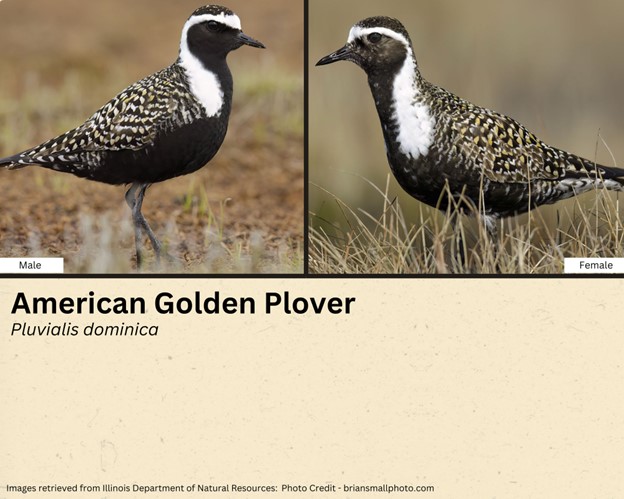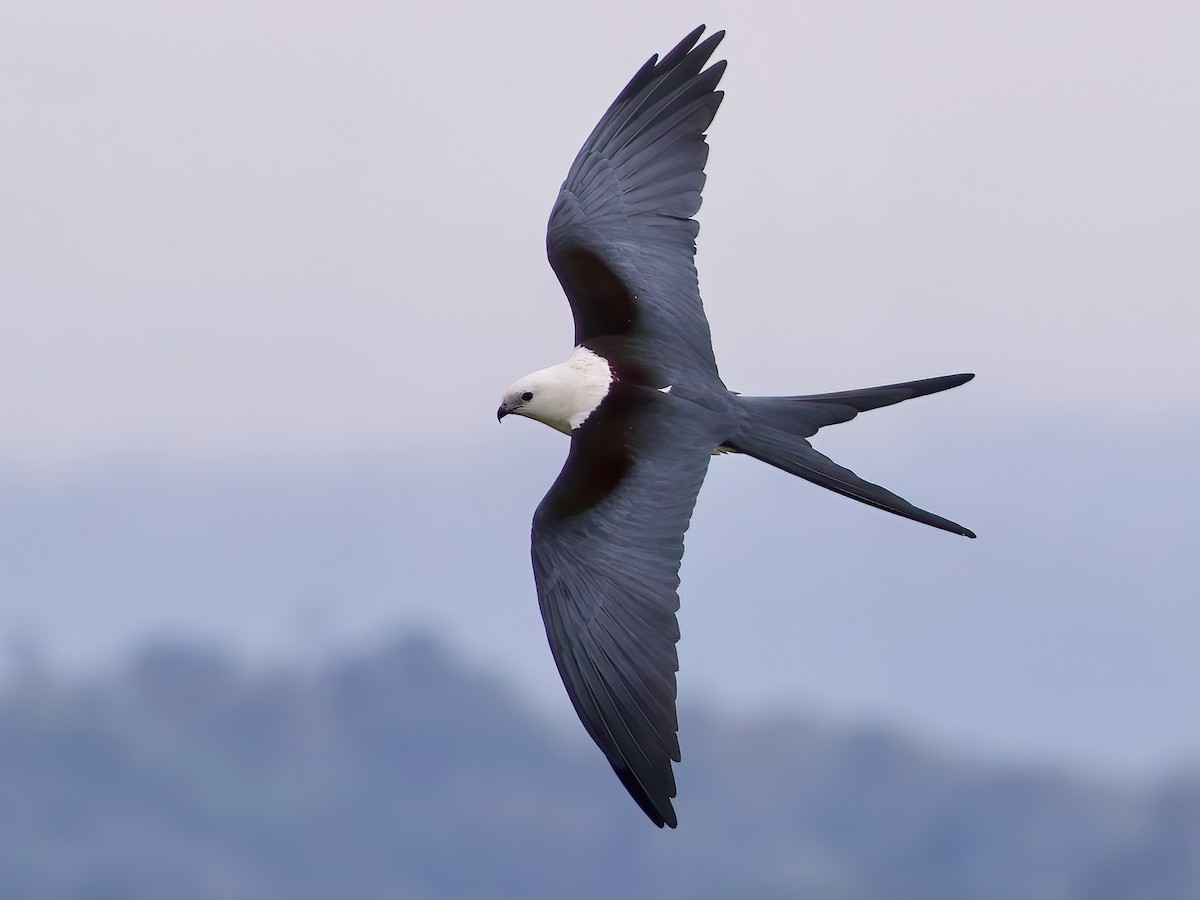Barred owl Information
The barred owl (Strix varia) is a larger owl species found in North America. They are part of the family Strigidae, known as the “true owl family.” These brown-gray owls are native to Eastern North America, most often found in mature forests and woodlands. Their main diet is small mammals, but barred owls are known as opportunistic hunters and have been seen consuming other birds, reptiles, amphibians, and even a variety of invertebrates. This is one of the more common owl species that we see here at the Wildlife Medical Clinic.
New Patient Arrival
In fact, on August 20, 2024, a barred owl came to the clinic and was in poor body condition, had external parasites, and signs of inflammation and damage in both eyes. During our exam, we found a clavicle fracture that was confirmed with x-rays, which would partly explain why this bird was not in the greatest condition. The clavicle is an integral part of the bone and muscle structure that gives birds the ability to fly. Meaning this individual was not able to hunt for prey due to this injury. These fractures, however, are very easily healed with cage rest. The next issue of concern on the list of problems this barred owl had, was its eye inflammation and damage. We needed to assess whether it had the ability to see. On August 23, we consulted with the Veterinary Teaching Hospital’s Ophthalmology Department, where it was confirmed that in the right eye there was a portion of the retina that was detached, which led to the eye being non-visual. The left eye had some mild inflammation and damage but was determined to be mostly functional. The plan moving forward after this exam was to see if the ongoing inflammation in the right eye would resolve, and if not, the eye would need to be removed via a procedure called an eye evisceration.
Potential Surgical Option for this patient
In general, animals that come to the clinic and are found to have non-functional eyes are given a poor prognosis or ability to survive in the wild. Most of the animals we treat in the clinic either use their eyes for hunting or to watch for predators. Without vision in either one or both eyes these survival instincts are no longer intact, and the animal would either not be able to find food or would be at a greater risk of predation. With owls, due to their nocturnal nature, they rely more on their hearing while hunting at night, than their sight. Because of this, owls are a candidate for the eye evisceration surgical technique to treat non-healing or non-visual eyes.
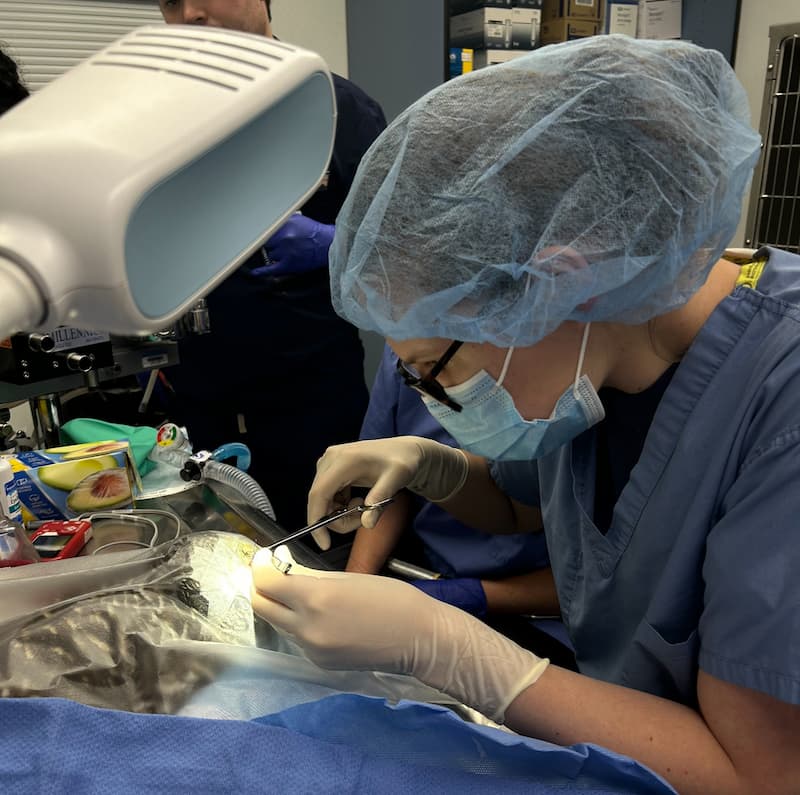
With this barred owl, the inflammation unfortunately did not resolve, even with medication. Therefore, on the 29th of August, Riley Dunwoody, our junior student manager, performed the eye evisceration surgery under the guidance of our Director, Dr. Lewis. For this procedure, the very front part of the eye, the cornea, is removed and the inside of the eyeball is removed. The outer structure of the eyeball is left intact and the eyelids are sutured closed around it. The outer structure of the eyeball is left intact on purpose. In owls they have a structure known as scleral ossicles within the structure of their outer eye. This gives their face and head the structure it needs to properly allow for sounds to enter the ear. If the entire eye was to be removed, then the face would lose its normal shape, and the owl would lose its sharp ability to hear their prey.
Recovery and Next Steps
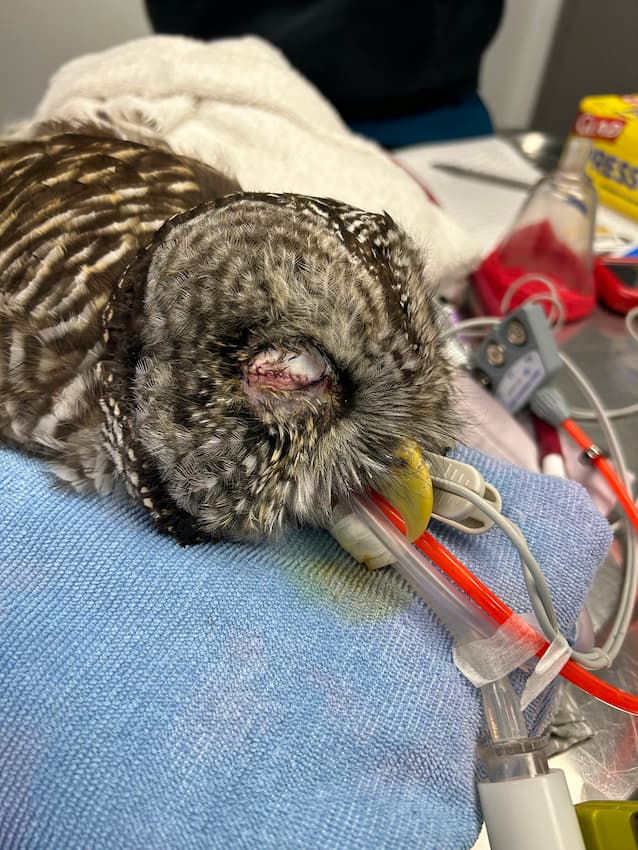
Post surgery, the patient recovered well, their weight significantly improved, and the clavicle fracture showed promising improvement with the formation of a callus (area of extra mineral or bone growth) which indicated the bone was healing. It was decided we would flight test this patient to see if they were ready to be transferred or released. Temporary equipment called removable anklets were placed on the bird’s legs. Then small strings called jesses are placed through the anklets and connected to an extender that is then connected to a creance line. The creance is a light weight, long line that is connected to a weight. This technique can be used to safely evaluate a bird’s flight or to help them build up strength flying to condition them for release. Creancing allows the bird to fly but for a limited distance, usually up to 150-200 feet but we start off at shorter distances and increase the length and number of times they fly on the creance, as they build up strength. However, for this purpose, it was just used to evaluate the Barred Owls flight capabilities. When this bird was creanced, we saw that it had flight capability but would need a lot of conditioning before it was ready to be released. Because of this, we determined that the most beneficial next step would be to transfer to another licensed rehabilitation center that has access to a large flight cage. This would be the best way for this individual to regain strength to fully fly again before it is released back into the wild.
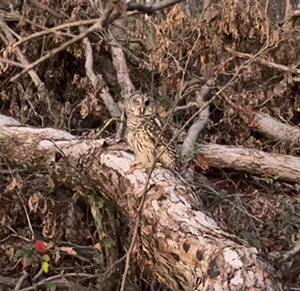
After a month with us, on September 24, we successfully transferred this barred owl to a facility with a large flight cage, where it continued its rehabilitation. Our friends at Illinois Raptor Center allowed this patient to recondition in their large flight cages, and on November 19, Riley had the privilege of releasing this patient back in their home territory!
Written By: Riley, Junior Student Manager and Class of 2027

